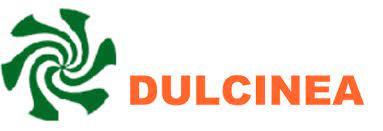Narrative Ecosystem for Edutainment
Ethical Mindset Application in Children's Series and YouTube
DOI:
https://doi.org/10.62161/revvisual.v17.5825Keywords:
Narrative, Brand, Ethic, Edutainment, Educommunication, Transmedia, ChildAbstract
The children's series and videos on social media are recognized as significant educommunicators. The study aims to identify values, positive educational contributions, and pedagogical questions within the first season and songs of the children's brand C&C. An interpretative investigation was conducted using qualitative methodology to develop grounded theory. Data were analyzed and interpreted through unstructured and semi-structured interviews, document review, and participant observation. Validation was achieved through triangulation, and theoretical coding was carried out in Atlas.ti. Results reveal values like solidarity, learning from mistakes, and teamwork, while also highlighting issues with unclear explanations and games unsuitable for preschool audiences.
Downloads
Global Statistics ℹ️
|
218
Views
|
496
Downloads
|
|
714
Total
|
|
References
Aierbe-Barandiaran, A. & Oregui-González, E. (2018). Valores y emociones en narraciones audiovisuales de ficción infantil. Revista Científica de Educomunicación, 24 (47), 69-77. http://educa.fcc.org.br/pdf/comunicar/v24n47/1988-3293-comunicar2447-00069.pdf DOI: https://doi.org/10.3916/C47-2016-07
Alshamrani, S., Abusnaina, A., Abuhamad, M., Nyang, D., & Mohaisen, D. (2021). Hate, obscenity, and insults: Measuring the exposure of children to inappropriate comments in YouTube. Web Conference 2021: Companion of the World Wide Web Conference (Www 2021), 508-515. https://doi.org/10. 1145/3442442.3452314 DOI: https://doi.org/10.1145/3442442.3452314
Ayuda Ley Protección Datos. (2021, 21 de junio). YouTube Kids. https://ayudaleyprotecciondatos.es/ 2021/06/21/youtube-kids/
Bardin, L. (2002). El análisis de contenido. Akal Ediciones.
Barrantes, R. (2014). Investigación: Un camino al conocimiento, Un enfoque Cualitativo, cuantitativo y mixto. EUNED
Barrio, F. G. & Rebaque, B. R. (2015). Producción y diseño instructivo de vídeos didáctico-musicales. Una experiencia de aprendizaje abierto y flipped classroom. Educatio Siglo XXI, 33(1), 277-294. https://doi.org/10.6018/j/222601 DOI: https://doi.org/10.6018/j/222601
Barlovento. (2025). Informe anual 2024. https://barloventocomunicacion.es/wp-content/uploads/ 2025/01/INFORME-ANUAL-2024-BARLOVENTO-COMUNCACION.pdf
Buckingham, D. (2019). The Media Education Manifesto. Polity Press.
Castillo, E.; Pronina, M.; Hübscher, I., & Prieto, T. (2023). Narrative Performance and Sociopragmatic Abilities in Preschool Children are Linked to Multimodal Imitation Skills. Journal of Child Language, 50(1), 52-77. https://doi:10.1017/S0305000921000404 DOI: https://doi.org/10.1017/S0305000921000404
Collier, D. (2012), “Relocalizing wrestler: performing texts across time and space”. Language and Education, 27(6), 481-497. http://dx.doi.org/10.1080/09500782. 2012.727831 DOI: https://doi.org/10.1080/09500782.2012.727831
Contreras-Espinosa, R. S., García-Medina, I. G., & González, Z. (2015). Consumo de Medios Digitales por niños y preadolescentes en Cataluña, España. ZER-Revista de Estudios de Comunicación, 20(39), 145-162. https://doi.org/10.1387/zer.15529 DOI: https://doi.org/10.1387/zer.15529
Curenton, S. M., Craig, M. J., & Flanigan, N. (2008). Use of decontextualized talk across story contexts: How oral storytelling and emergent reading can scaffold children's development. Early Childhood Research Quarterly, 23(4), 515-531.
De-la-Espriella, R., y Gómez-Restrepo, C. (2020). Teoría fundamentada. Revista Colombiana De Psiquiatría, 49(2). https://doi.org/127–133.10.1016/j.rcp.2018.08.002 DOI: https://doi.org/10.1016/j.rcp.2018.08.002
Denzin, N. K. (1970). The Research Act: A Theoretical Introduction to Sociological Methods. Transaction Publishers.
Ferreira, M. J., Paradeda, R. B., Oliveira, R., Nisi, V., & Paiva, A. (2022). Using storytelling to teach children biodiversity. In Interactive Storytelling: 15th International Conference on Interactive Digital Storytelling, ICIDS 2022, Santa Cruz, CA, USA, December 4-7, 2022, Proceedings (pp. 3-27). Springer-Verlag. https://doi.org/10.1007/978-3-031-22298-6_1 DOI: https://doi.org/10.1007/978-3-031-22298-6_1
Flick, U. (2012). Introducción a la investigación cualitativa. Morata.
Gkolemi, M., Papadopoulos, P., Markatos, E. P., & Kourtellis, N. (2022). YouTubers not madeForKids: Detecting channels sharing inappropriate videos targeting children. Proceedings of the 14th ACM Web Science Conference, 22(1), 370-381. https://doi.org/10.1145/3501247.3531556 DOI: https://doi.org/10.1145/3501247.3531556
Glaser, B. G. & Strauss, A. L. (1967). The discovery of grounded theory: Strategies for qualitative research. Aldine Pub. Co. DOI: https://doi.org/10.1097/00006199-196807000-00014
Gürtler, L. & Huber, G. L. (2007). Modos de pensar y estrategias de la investigación cualitativa. Liberabit, 13(13), 37-52.
INCIBE (2025). YouTube Kids. https://www.incibe.es/menores/familias/control-parental/youtubekids
Isnah, E., Suyatno, S., Subandiyah, H., Suhartono, S., Pairin, U., & Darni, D. (2021). Cross‐cultural narratives in literature for children: A cyber semiotics analysis. https://doi.org/10.2991/assehr.k. 211212.017 DOI: https://doi.org/10.2991/assehr.k.211212.017
Jenkins, H. (2006). Convergence Culture: Where Old and New Media Collide. New York University Press.
Jorgensen, D. L. (1989). Participant Observation: A Methodology for Human Studies. Sage. DOI: https://doi.org/10.4135/9781412985376
Livingstone, S., & Blum-Ross, A. (2020). Parenting for a Digital Future: How Hopes and Fears about Technology Shape Children's Lives. Oxford University Press. DOI: https://doi.org/10.1093/oso/9780190874698.001.0001
Lluch, G. (2003). Análisis de narrativas infantiles y juveniles (Colección Arcadia / Universidad de Castilla-La Mancha). Ediciones de la Universidad de Castilla-La Mancha.
Marino-Jiménez, M., Torres-Ravello, C. & Valdivia-Llerena, G. (2019). Educación y medios audiovisuales: una reflexión sistémica para su implementación, 30 fortalecimiento y sostenibilidad. Propósitos y Representaciones, 8(1), e438. http://dx.doi.org/10.20511/pyr2020.v8n1.438 DOI: https://doi.org/10.20511/pyr2020.v8n1.438
Martín-Gómez, S., Vidal-Esteve, M. I., & López-Gómez, S. (2022). A study on the didactic, content and narrative characteristics of the audiovisual products available on YouTube Kids. Early Childhood and Technologies at School and at Home 41(1), 140-157. https://doi.org/10.1344/der.2022. 41.140-157 DOI: https://doi.org/10.1344/der.2022.41.140-157
Ministerio de Juventud e Infancia. (2024). Informe del comité de personas expertas para el desarrollo de un entorno digital seguro para la juventud y la infancia [PDF]. https://www.juventudeinfancia .gob.es/sites/default/files/
Neira-Placer, P., & Visiers, A. (2024). The values associated with toys in YouTube channel contents: Case study. Revista De Comunicacion De La Seeci, 57(1), 858. https://doi.org/10.15198/seeci.2024.57 .e858 DOI: https://doi.org/10.15198/seeci.2024.57.e858
Neumann, M. M., & Herodotou, C. (2020). Evaluating YouTube videos for young children. Education and Information Technologies, 25(5), 4459-4475. https://doi.org/10.1007/s10639-020-10183-7 DOI: https://doi.org/10.1007/s10639-020-10183-7
Nicolopoulou, A. (2011). Children's storytelling: Toward an interpretive and sociocultural approach.
Norton, K. E., & Kovacs, M. H. (2017). Human and business success factors for transmedia design collaborations. Media Industries Journal, 4(2), 44-61. http://dx.doi.org/10.3998/mij.15031809. 0004. 203 DOI: https://doi.org/10.3998/mij.15031809.0004.203
Oregui, E., Aierbe, A., & Bermejo, J. (2019). Narrative skill and identification of values and countervalues in cartoons by Primary Education students. Anales de Psicología, 35(2), 269-279. http://dx.doi.org/10.6018/analesps.35.2.331441 DOI: https://doi.org/10.6018/analesps.35.2.331441
Pahl, K. (2007) Creativity in events and practices: a lens for understanding children’s multimodal texts. Literacy, 41(2), 86-92. DOI: https://doi.org/10.1111/j.1467-9345.2007.00462.x
Pérez-Rodríguez, A.; Jaramillo-Dent, D. y Alencar, A. (2022). Culturas digitales en las redes sociales: Nuevos modelos de creatividad, (auto) representación y participación. ICONO 14, 20(2), 1-13. https://doi.org/10.7195/ ri14.v20 i2.1928 DOI: https://doi.org/10.7195/ri14.v20i2.1928
Pérez-Tornero, José Manuel (2020). La gran mediatización I. El tsunami que expropia nuestras vidas. Del confinamiento digital a la sociedad de la distancia. UOC.
Piotrowski, J.T. & Krcmar, M. (2017). Reading with hotspots: Young children's responses to touchscreen stories. Computers in Human Behavior, 70(1), 328-334. https://doi.org/10.1016/j.chb.2017. 01.010 DOI: https://doi.org/10.1016/j.chb.2017.01.010
Pires, F., Masanet M. J. & Scolari, C. A. (2019). What are teens doing with YouTube? Practices, uses and metaphors of the most popular audio-visual platform. Information, Communication & Society 24(9), 1-32. https://doi.org/10.1080/1369118X.2019.1672766 DOI: https://doi.org/10.1080/1369118X.2019.1672766
Qustodio (2023). ADR 2023 [PDF]. https://static.qustodio.com/publicsite/uploads/2023/02/
Renes-Arellano, P., Carmen Caldeiro-Pedreira, M., Rodríguez-Rosell, M. del M., & Aguaded, I. (2018). Educlips: proyecto de alfabetización mediática en el ámbito universitario. Lumina, 12(1), 17-39. https://doi.org/10.34019/1981-4070.2018.v12.21485 DOI: https://doi.org/10.34019/1981-4070.2018.v12.21485
Rosenqvist, J., Lahti-Nuuttila, P., Holdnack, J., Kemp, S. L., & Laasonen, M. (2016). Relationship of TV watching, computer use, and reading to children's neurocognitive functions. Journal of Applied Developmental Psychology, 46(1), 11-21. https://doi.org/10.1016/j.appdev.2016.04.006 DOI: https://doi.org/10.1016/j.appdev.2016.04.006
San Martín, D. (2014). Teoría fundamentada y Atlas.ti: recursos metodológicos para la in-vestigación educativa. Revista Electrónica de Investigación Educativa, 16(1), 103-122.
Saurabh, S., y Gautam, S. (2019). Modelling and statistical analysis of YouTube’s educational videos: A channel Owner’s perspective. Computers & Education, 128(1), 145-158. https:// doi.org/10.1016/j.compedu.2018.09.003 DOI: https://doi.org/10.1016/j.compedu.2018.09.003
Scolari, C. A. (2009). Transmedia storytelling: Implicit consumers, narrative worlds, and branding in contemporary media production. International Journal of Cultural Studies, 12(1), 41-56.
Scolari, C. A. (2016). Alfabetismo transmedia: estrategias de aprendizaje informal y competencias mediáticas en la nueva ecología de la comunicación. Telos: Revista de pensamiento sobre Comunicación, Tecnología y Sociedad, 193(1), 13-23. http://hdl.handle.net/10230/27788
Scolari, C. A. (2024). Sobre la evolución de los medios: Emergencia, adaptación y supervivencia. Editorial Ampersand.
Spencer, T. D. & Slocum T. A. (2011). The effect of a narrative intervention on story retelling and personal story generation skills of preschoolers with risk factors and narrative language delays. Journal of Speech, Language, and Hearing Research, 54(5), 1182-1198. https://doi.org/10.1177/10538 15110379124
Spradley, J. P. (1980). Participant observation. Rinehart & Winston.
Stake, R. E. (2010). Investigación Cualitativa: El estudio de cómo funcionan las cosas. The Guilford Press.
Strauss, A. & Corbin, J. M. (1997). Grounded theory in practice. Sage Publications.
Suddaby, R. (2006). From the editors: What grounded theory is not. The Academy of Man-agement Journal, 49(4), 633-642. DOI: https://doi.org/10.5465/amj.2006.22083020
Sylla, C., Coutinho, C., Branco, P., & Müller, W. (2012). Investigating the use of digital manipulatives for storytelling in pre-school. Computers & Education, 58(1), 321-329. https://doi.org/10.1016/ j.compedu.2011.08.013
UNESCO (2013). Media and information literacy: Policy and strategy guidelines. United Nations Educational. https://bit.ly/2SOpEKb.
Urbano, R., & Aguaded, I. (2022). Posicionamiento de franquicias infantiles transmedia. Doxa Comunicación, 35 (1), 211-223. https://doi.org/10.31921/doxacom.n35a1623 DOI: https://doi.org/10.31921/doxacom.n35a1623
Vandaele, J. (2018). Narratología y traducción audiovisual. En The Routledge handbook of audiovisual translation (pp. 225-241). Routledge. DOI: https://doi.org/10.4324/9781315717166-15
Wohlwend, K. E. (2012). "Are you guys girls?": Boys, identity texts, and Disney Princess play. Journal of Early Childhood Literacy, 12(3), 3-23. DOI: https://doi.org/10.1177/1468798411416787
Downloads
Published
How to Cite
Issue
Section
License
Copyright (c) 2025 Authors retain copyright and transfer to the journal the right of first publication and publishing rights

This work is licensed under a Creative Commons Attribution-NoDerivatives 4.0 International License.
Those authors who publish in this journal accept the following terms:
-
Authors retain copyright.
-
Authors transfer to the journal the right of first publication. The journal also owns the publishing rights.
-
All published contents are governed by an Attribution-NoDerivatives 4.0 International License.
Access the informative version and legal text of the license. By virtue of this, third parties are allowed to use what is published as long as they mention the authorship of the work and the first publication in this journal. If you transform the material, you may not distribute the modified work. -
Authors may make other independent and additional contractual arrangements for non-exclusive distribution of the version of the article published in this journal (e.g., inclusion in an institutional repository or publication in a book) as long as they clearly indicate that the work was first published in this journal.
- Authors are allowed and recommended to publish their work on the Internet (for example on institutional and personal websites), following the publication of, and referencing the journal, as this could lead to constructive exchanges and a more extensive and quick circulation of published works (see The Effect of Open Access).













